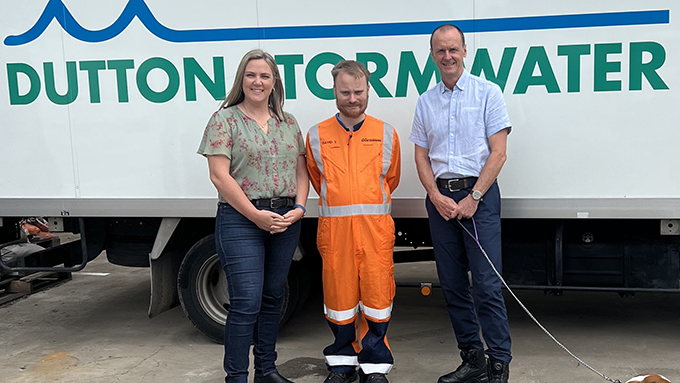Diversity, equity and inclusion practitioner Pete Mercer explores why consideration for DEI in staffing decisions is even more important during times of flux.
In the current employment climate, many organisations are facing tough decisions about what their business structure needs to look like now to safeguard a successful future.
But what is at stake for organisations that don’t hold diversity, equity and inclusion (DEI) at the heart of such decision-making? What are the potential implications for the wider social and economic landscape of Aotearoa New Zealand? And practically speaking, how do we get the right people in the right place without losing all the gains we have made in the DEI space?
Many organisations understandably focus on diversifying their talent pool when recruiting new people, seizing the opportunity to enrich their organisation, particularly in times of stability and growth - and rightly so. No employer should be complacent in this respect, ensuring they exercise a critical view of how inclusive and equitable their recruitment practice and processes are.
And, except for recruitment freeze periods, rarely do the employee profiles of organisations remain entirely static, so inclusive and equitable hiring is always relevant, even in times of economic downturn.
What is talked about much less often, however, is how the same organisational principles apply when restructuring and downsizing.
From a general people management perspective - and certainly from a DEI perspective - it is broadly accepted that involuntary redundancies should ideally be a last resort for organisations, on account of the potential harm such processes can inflict on employee engagement, wellbeing and trust.
As we all know, sometimes employers simply have no choice. Where organisations do usually have some degree of choice, though, is in precisely what decisions are made, how they are arrived at and executed, and how their consequences are managed. From an equity impact perspective, the approach an employer takes can reduce the potential havoc that can be caused.
Fundamentally, if people that belong to historically marginalised, under-represented or non-dominant groups are disproportionately being made redundant, compared with the wider workforce populations, then these are not equitable outcomes.
The consequences of these decisions extend well beyond the walls of your organisation. Gainful employment - that is, access to decent and fairly paid work - is one of the most significant socio-economic determinants. During a climate of recession, inequity in redundancies being made across organisations holds the potential to alter the national picture in terms of socio-economic outcomes. In essence, ubiquitous inequitable decision-making can (and will, if not avoided) result in a less equal Aotearoa New Zealand.
So how can this be avoided?
In the planning and preparation phase, it’s paramount that organisations’ goals are clearly defined, so that key drivers and desired outcomes are ascertained - including the need for equitable outcomes. Only from this point can you develop objective criteria and establish metrics for impact analysis.
When establishing and applying criteria, it’s important that the decision-making team that’s assembled is in itself diverse, aware of equity issues and capable of challenging bias and group-think. Then in any scenario planning, the team should conduct reviews to assess any disproportionate impact - crucially before decisions are finalised.
Once a restructure has been completed, organisations must continue to monitor and review subsequent outcomes, tracking key metrics such as demographic representation, employee engagement and turnover rates among remaining employees.
Of course, there is much more to consider than the staffing decisions themselves. Times of change call for a holistic plan to ensure your organisation is heading in the right direction, adapting its strategic leadership course and dialling up transparency to 10 through open communication.
Most crucially, providing as much wellbeing support as is feasible and building a culture of empathetic inclusion is the key to ensure that people feel valued and respected - both during and long after any structural shifts.
Unfortunately, precarious economic climates sometimes result in DEI objectives (and the infrastructure that supports them) being de-prioritised or abandoned by organisations, who mistakenly perceive them as surplus to core requirements, rather than mission critical. This is a grave error.
Not only does continued commitment to DEI demonstrate unwavering adherence to your organisation’s values and long-term goals - in the bad times as well as the good - but it also reduces the risk of discrimination, helps keep staff wellbeing and morale afloat, and bolsters the cohesion of your teams.
So in what ways can you leverage cornerstone DEI priorities to support your organisation and its people during these challenging times?
Consider the following core areas:
- Leadership - don’t shy away from the important but sometimes uncomfortable conversations about what equity looks like during structural change and how it can best be achieved. Lead from the top in terms of role modelling compassionate behaviour.
- Data - diversity data is essential for performing an accurate equity impact assessment. Use any diversity data you have in criteria setting, scenario planning and the staffing decisions themselves, and continue to build upon your data infrastructure for future workforce monitoring and planning. Diversity Works New Zealand’s Diversity Data guides can support you to do this work.
- Recruitment - where any hiring is taking place, seize these opportunities to diversify your talent pipeline. This means removing unnecessary barriers, being vigilant against bias (both inter-personal and systemic) and proactively widening your talent search through a diversity lens. Learn more from Diversity Works New Zealand’s series of guides on Diverse Recruitment.
- Career development - broaden your career development offerings to give your people the best possible chance for adaptation and empower them to pivot to different opportunities, while identifying and mitigating the barriers to progression that those from diverse groups face.
- Cultural change programme - invest in the parts of your organisational culture you wish to retain and cultivate, dial up efforts to enhance inclusive collaboration and amplify the voices and contributions of those who are under-represented or marginalised.
- Strategy - such a significant structural shift will undoubtedly alter the fibre of your organisation, including from a DEI perspective, so take the opportunity to revisit your strategy to re-assess what your priorities should be.
Remember that who you have in your organisation is certainly not the only measure of success, because headcounts say little about how individuals are treated during such processes. True success hinges on our commitment to fairness across every facet of the employee experience, and upholding the mana and dignity of each and every individual, no matter the eventual outcome.
The principles of equity and inclusion are the compass that organisations should use to navigate today’s storms and to find a path towards resilience and sustainability. Making DEI a priority in challenging times is what fortifies our workplaces for the times that lay ahead.
Download the August 2024 digital edition of Taura magazine




